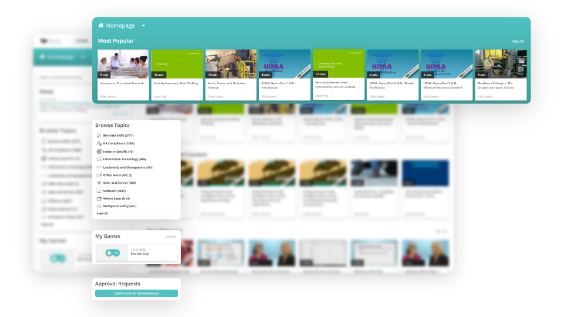CONFLICT RESOLUTION TRAINING
FOR YOUR ORGANIZATION
FOR YOUR ORGANIZATION
Causes of Workplace Conflict
Workplace conflict is inevitable. When people of differing backgrounds, experience, and work styles are brought together, there are sure to be bumps along the way. Those bumps can be brought on by:- Differences in personality
- Irritating habits of others
- Perceived inequities or unfairness
- Lack of clear job roles and expectations
- Mergers, acquisitions, layoffs
- Poor change management skills
- Breakdown in communication
Defining Conflict Resolution Strategies
Everyone has a way they like to manage conflict. Each of the ways have their own pros and cons as well.Accommodation
This strategy involves putting the needs of the other party ahead of your own. This style usually takes place when you either simply give in or are persuaded to give in.
This style may be used by someone if:
- They feel like they have no choice but to agree to the other party’s point-of-view
- They care less about the issue than the other party
- They just want to keep the peace
Someone who uses this strategy mostly tries to ignore the conflict, hoping it will go away and resolve itself. This person would not speak to either party involved in the conflict.
This style may be used by someone if:
- They need time to think about the situation
- They fear resentment from the other party
- They are too busy to deal with a conflict
- They see the conflict as trivial
- They don’t think they will win
This conflict resolution style works to find a solution that meets the needs of all parties. Rather than trying to find the middle ground, the solution would satisfy everyone – a win-win scenario.
This style may be used by someone if:
- There are multiple perspectives that need to be addressed
- There is an important relationship among the parties
- It’s imperative the solution please everyone
- Multiple stakeholders are represented
This style involves not giving in to others’ viewpoints or wants. A person will stand firm in what they think is correct and not back down until they get their way.
This style may be used by someone if:
- They are standing up for rights or morals
- They need a quick decision and force others into it
- They need to end a long-term conflict
- They need to stop a terrible decision from being made
Compromise
When compromising during conflict resolution, the person attempts to find a solution that tries to partially please all parties. This style works to find a middle ground between the needs of all participants.
This style may be used by someone if:
- They feel it is more important to reach a solution rather than the greatest solution
- They are willing to settle for a temporary solution
- They have a deadline that is approaching
- They are at an impasse
Necessary Skills to Resolve Conflict
Certain skills can be more beneficial than others when working to resolve conflict at work. Developing these skills can help ease the process for mediators.Communication skills are needed to facilitate any meetings between the conflicting parties. Mediators should be able to listen well, negotiate fairly, keep an open dialogue, and work to stem any provoking behaviors.
Developing emotional intelligence will help mediators in their efforts. They will be able to be adaptable and analytical while helping others recognize their triggers.
Having empathy in these situations can be beneficial. Mediators will be able to build trust, show compassion and understanding, give constructive feedback, and embrace differing opinions while remaining unbiased.
Some conflicts may require creative problem solving. Being able to develop creative solutions can help keep everyone happy in a situation. Being able to collaborate with others, make decisions, and define goals can help everyone involved.
Preview Videos from The BizLibrary Collection
Respect at Work: Conflict Resolution

Conflict De-Escalation: Developing a Solution Mindset (Part 3 of 3)

Identifying the Causes of Conflicts

How Conflict Affects Business
No workplace is without conflict, but how it is handled can leave a lasting effect, both positive and negative.
Conflict can leave employees feeling frustrated if they feel like there is no solution, or if their thoughts and concerns aren’t heard. This then adds to their stress level and can affect their mental health – losing sleep, having anxiety and headaches, and withdrawing from their peers.
When employees are stressed, their productivity goes down. The more time spent resolving a conflict, the more your employees are focusing on that and how it affects them and their coworkers.
Stress and low productivity can also mean low morale and job satisfaction. Employees may take time off in order to avoid conflict all together.
If the conflict becomes too much or isn’t resolved, employees will leave. The cost of that turnover and replacing that employee costs nearly 33% of the leaving employees’ salary. This can become an expensive endeavor if it involves high-level employees or whole departments.
How Online Training in Conflict Resolution Can Help
Online training is quickly becoming the best way to teach employees some of the skills they need to do their jobs. Numerous studies have shown that online training is often more effective, and learners retain more information than with classroom training alone.
BizLibrary curates a large and diverse video training library with numerous courses focused on developing all types of conflict resolution skills. Our micro video format breaks content up into smaller, more manageable chunks, making it easier for employees to learn and apply these skills on the job.

Explore more
of our business
skills topics.
Employees can search our library for the online courses they want to see on ways to improve their conflict resolution skills.
These online courses can be viewed on an individual basis – where employees learn by themselves at work or at home – or as part of a group training environment or discussion. They also utilize modern learning strategies that engage learners and reinforce content, so the information isn’t forgotten.
Church of the Resurrection came to BizLibrary after seeing rapid growth. In 2016, they had grown to four locations in and around the Kansas City, MO area and had an online presence as well. With this growth they knew they had a new set of challenges.
They were searching for new diversity content and liked the myriad lessons BizLibrary provides. They launched their program, Rez Academy, and found that having staff take video training when it worked for their individual schedules, at their own locations, was saving the organization and employees time and money.
They focused on their new manager challenges, and with that came lessons on conflict management. By partnering with BizLibrary, new managers have gained confidence in their roles and 40% of staff participate in additional optional training on topics like diversity awareness and inclusivity.
